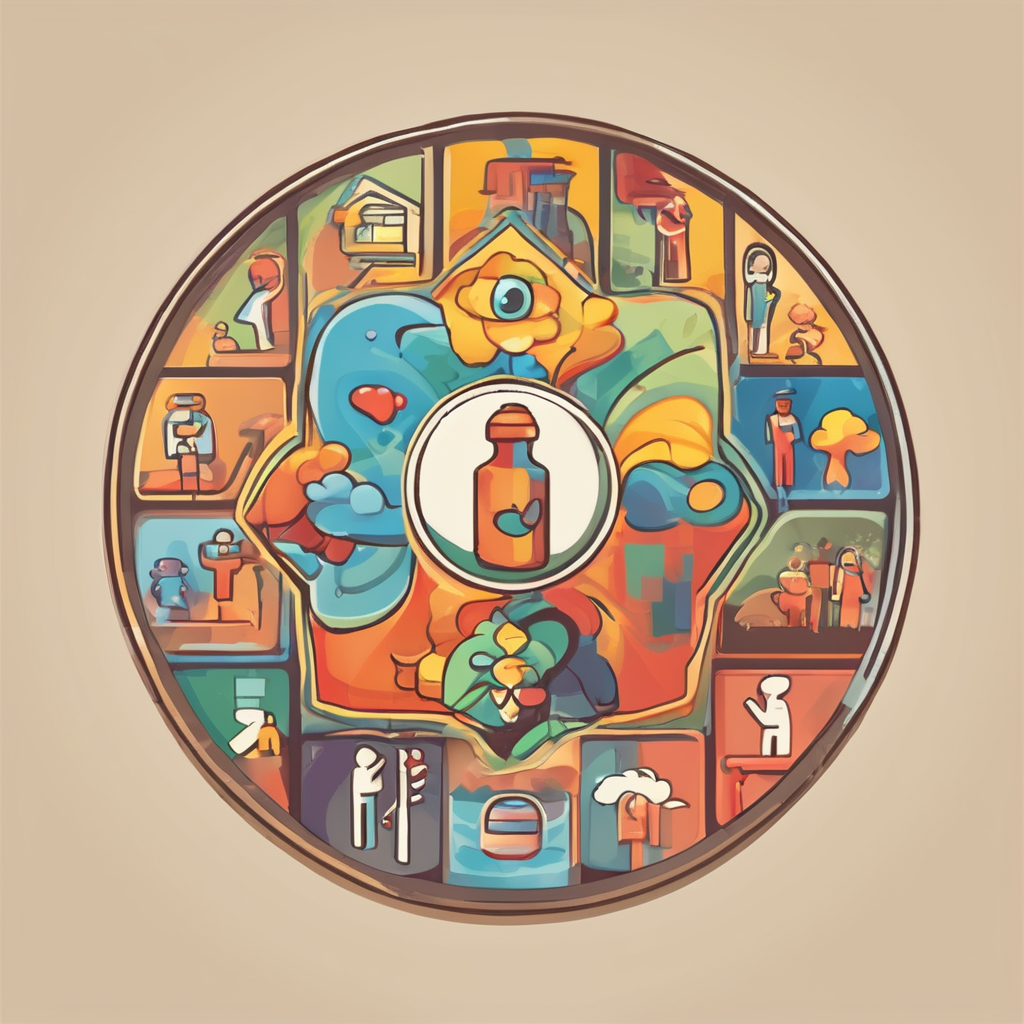Understanding Inclusivity in Wellness Plans
Inclusivity in wellness plans is a commitment to creating a welcoming environment that addresses the diverse needs of all individuals, including those with disabilities. This starts by recognising that people are different, and these differences should be acknowledged and respected in planning wellness strategies.
To achieve true inclusivity, wellness plans must be adaptable, ensuring that the broadest range of people can participate fully. This means considering various physical and cognitive abilities and making adjustments where necessary—such as providing accessible facilities or modified programs—for individuals with disabilities. Addressing these unique needs is crucial as it empowers everyone to benefit equally from wellness resources.
In parallel : Embracing a Holistic Strategy for Effective Chronic Pain Management: Your Comprehensive Guide
However, several barriers can prevent individuals with disabilities from accessing wellness plans effectively. Common obstacles include lack of physical accessibility, inadequate equipment, and insufficient training of staff in accommodating diverse participants. Additionally, communication barriers, such as lack of sign language interpreters or materials available in alternative formats, can also hinder full participation.
Recognising these barriers and proactively addressing them in wellness plans is a step toward making wellness resources more equitable. By doing so, wellness programs can ensure that they are not only inclusive in theory but also in practice. Through thoughtful adaptation and consideration, embracing inclusivity leads to a more comprehensive and supportive wellness environment for everyone involved.
Also to see : Effective Strategies for Crafting a Stress-Relief Blueprint Tailored to College Students
Key Components of a Comprehensive Wellness Plan
Achieving holistic health requires a comprehensive wellness plan that incorporates physical, mental, and social dimensions. Each component plays a crucial role, and understanding them can transform your approach to well-being.
Physical Wellness Strategies
Physical wellness serves as the foundation for holistic wellness. Regular exercise, a balanced diet, and adequate rest are vital elements. To enhance physical fitness, incorporate a variety of activities such as cardiovascular exercises, strength training, and flexibility workouts. Tailoring these activities to suit personal preferences and physical capabilities ensures sustainability and engagement. Adaptive tools and technology, such as fitness wearables and apps, offer support by tracking progress and providing personalised suggestions.
Mental Wellness Strategies
Mental wellness is equally essential. It involves managing stress, fostering resilience, and promoting positivity. Strategies include mindfulness practices like meditation and yoga, which can improve focus and emotional balance. Tailored approaches should consider personal stressors and coping mechanisms. Technology aids mental wellness too, with apps offering guided meditation and mental health resources readily accessible.
Social Wellness Strategies
Social wellness fosters connections and community involvement, essential for emotional support and happiness. Engage in meaningful relationships by participating in group activities or community events. Integrating physical, mental, and social wellness helps create a balanced and fulfilling life. Tailoring a comprehensive wellness plan to meet individual needs ensures its effectiveness and sustainability, providing a robust pathway to holistic health.
Practical Steps for Developing a Wellness Plan
Creating a personalized wellness plan is crucial for addressing individual health needs effectively. To start, establish clear goals—these provide direction and motivation. Ask yourself: What specific areas of wellness do I want to improve? Begin by outlining achievable and measurable goals, such as improving sleep quality or increasing physical activity. Ensure these objectives are realistic and fit into your daily routine.
Next, develop a step-by-step framework. Begin by understanding your current lifestyle and habits. This reflection will help identify changes necessary to achieve the desired goals. When forming your framework, integrate practical steps that are sustainable. For instance, if improving nutrition is a goal, include actions such as meal planning and incorporating more whole foods.
Tracking progress is equally important. Regularly assess your achievements and adjust your strategy as needed. This will not only keep you motivated but also help highlight what works best. Utilize tools like apps or journals to monitor progress systematically.
Finally, engage with healthcare professionals to receive tailored advice. These experts can offer personalized strategies and address specific health concerns to further refine your wellness plan. Together, these steps create a robust path to enhanced health and well-being, ensuring the plan remains effective and enjoyable.
Examples of Inclusive Practices
Inclusive practices have gained importance in creating environments where everyone, regardless of their abilities, feels valued and supported. These practices are being highlighted through successful case studies and organizations adopting best practices.
Community Programs and Resources
Community programs are invaluable in offering resources that champion inclusivity. Successful case studies demonstrate how local initiatives can effectively cater to diverse needs. For instance, some communities have incorporated specially adapted sports activities that promote physical health and foster social interaction among individuals of varying abilities. Such inclusive practices ensure comprehensive participation. Additionally, libraries and community centers often provide accessible educational opportunities, ensuring everyone can partake in lifelong learning.
Workplace Wellness Initiatives
In modern workplaces, wellness initiatives must embrace inclusivity to be effective. Some successful case studies show companies that have incorporated mental health days, flexible working hours, and ergonomic workstations to accommodate employees with disabilities. These best practices not only enhance overall workplace morale but also significantly boost productivity. By prioritizing wellness and inclusivity, organizations create a supportive atmosphere that benefits all employees.
Educational Opportunities
Education plays a crucial role in fostering inclusivity. Schools and universities are increasingly using adaptive technologies and inclusive teaching methods to tailor learning experiences for students with disabilities. Highlighting successful case studies, some educational institutions have introduced sensory-friendly environments and curricular adaptations, ensuring every student receives quality education. These examples underscore the potential of inclusive practices to transform educational landscapes positively.
Resources for Individuals with Disabilities
Access to resources for disabilities is crucial in enhancing the well-being and independence of individuals. These resources come in various forms, helping to address diverse needs:
-
Local and Online Platforms: There are both local and online resources dedicated to improving the wellness of those with disabilities. Online platforms often provide forums for discussions, access to adaptive tools, and virtual consultations. Local establishments, like community centres, often offer tailored programmes.
-
Funding and Grants: There are numerous funding sources and grants available that specifically support wellness initiatives for individuals with disabilities. These financial supports can help with purchasing adaptive tools, modifying living spaces, or even accessing therapy services. Checking with local government agencies or non-profit organisations can reveal available offerings.
-
Support Networks and Peer Connections: Being part of support networks can have a profound impact. Peer connections provide not just emotional backing, but also the sharing of strategies and advice on navigating daily life. Many find these networks vital in fostering a sense of community and belonging.
These resources are instrumental in promoting wellness and empowering individuals with disabilities, making life more manageable and enjoyable.
Expert Insights and Testimonials
Bringing together expert advice and real-life success stories help illustrate the potential of wellness strategies in enhancing quality of life. The breadth of experience from wellness professionals and the personal triumphs shared by individuals offer a comprehensive understanding of the impact these strategies have on daily living.
Interviews with Wellness Professionals
In our quest to gather the most accurate and insightful information, we spoke with wellness professionals specializing in disability support. Their expert advice highlights the importance of personalized wellness plans, tailored to address unique needs. For example, a leading practitioner emphasized the significance of regular assessments to adjust strategies effectively, ensuring they are up to date and beneficial.
Personal Experiences from Individuals
Personal experiences offer invaluable insights. Consider the story of Alex, who struggled with mobility issues. Through expert advice and consistent implementation of a wellness plan, Alex experienced notable improvements in daily activities. These testimonials underscore the transformative power of well-thought-out wellness practices and their immense value.
Impact of Wellness Plans on Quality of Life
Wellness plans go beyond physical health, profoundly affecting overall quality of life. Effective strategies can lead to improvements such as enhanced mobility, better mental health, and increased independence. Success stories consistently show individuals reporting greater satisfaction and newfound autonomy, proving the comprehensive benefits of investing in professional guidance and tailored wellness plans.











